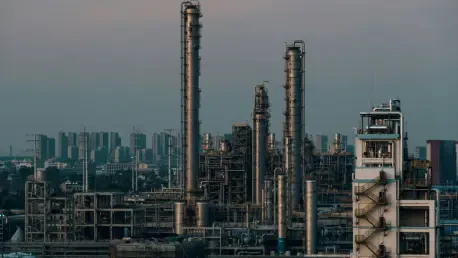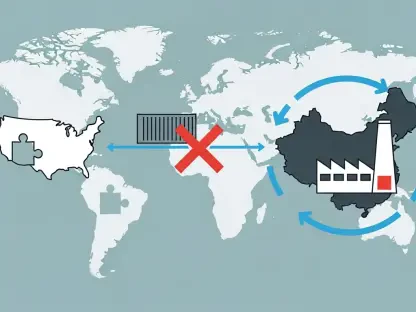As the global chemical industry navigates through 2025, industry players are closely watching for signs of recovery after a prolonged period of suppressed demand. The fallout from an extended phase of inventory destocking in previous years, notably impacting the chemical and specialty chemical sectors, set the stage for a gradual rebound. While the destocking phase concluded last year, visibility concerning demand and sales remained constrained. The current year marks a shift, with companies witnessing a year-on-year increase in volumes. This shift, although promising, continues to be marked by caution as the overall industry performance is still far from robust. Such developments underscore a cautiously optimistic stance, as industry experts project a gradual yet tentative positive trajectory for demand recovery throughout this year.
While 2025 has unfolded with improved volumes across segments like chemicals and specialty chemicals, underlying pricing trends have yet to fully catch up. Last year’s weak pricing dynamics persist, casting doubts on the comprehensive nature of the recovery. The agrochemical sector is particularly affected, continuing to grapple with inventory-related challenges. Although the burden of excess inventory has eased to some extent, the sector is still treading carefully amid mixed forecasts. Certain stakeholders perceive an optimistic demand growth in agrochemical markets, buoyed by the normalization of inventories expected to continue throughout the year. However, this growth is potentially hindered by prevailing low farm product prices, contributing to ongoing pricing pressures. Hence, the chemical industry faces an evolving landscape in 2025, leaving some stakeholders cautiously optimistic while others demand decisive proof of recovery.
Mixed Signals and Market Dynamics
While chemical companies remain cautiously optimistic, mixed signals abound, creating an intriguing yet unpredictable market climate. For chemical and specialty chemical manufacturers, volume growth has not significantly translated into better pricing power, as last year’s trends persist. Fluctuating input costs present additional challenges to maintaining sustainable growth trajectories. Meanwhile, the agrochemical sector is preparing for growth backed by inventory normalization, though it operates under variable farm product price conditions. Agrochemical firms focus on optimizing inventory management to strike a balance between demand and supply. The delicate balance of improving inventory management with fluctuating product prices is indicative of the sheer complexity facing this sector. These multifaceted market dynamics call for an adaptable approach aimed at navigating shifting uncertainties and strategic responses to both local and global market signals.
External factors, including changing tariffs, also play a significant role in shaping pricing trends. Recent tariff modifications are expected to impact the cost structures of industry players, although their significance and potential effects remain speculative at best. Such complexities underline the need for heightened strategic alignment across sectors to navigate uncharted waters. Chemical sector stakeholders need to leverage insights from global market shifts to adapt their strategies proactively, ensuring resilience and adaptability. An agile approach, coupled with strategic foresight, is necessary for the industry to weather anticipated challenges while optimizing growth prospects. Despite the uncertainties, industry participants exhibit cautious optimism as they closely monitor shifts within the chemical landscape, informed by an ongoing analysis of key indicators and responsive strategic adjustments.
Indian Chemical Industry Connection
An interesting twist in the ongoing narrative is the anticipated ripple effects of global recovery on the Indian chemical sector. Volume recovery in global chemical markets creates promising avenues for growth in India, where the sector is positioned to benefit significantly. The global volume uplift is likely to bolster India’s chemical market, even in the absence of pronounced pricing hikes. However, industry leaders remain vigilant, determining their course based on observed trends. Balancing opportunities and challenges is critical in maintaining a competitive advantage and enhancing growth prospects. This delicate balance, overlaid on the Indian chemical landscape, adds another layer of complexity to the global recovery story, warranting attention from both local and international stakeholders.
Indian chemical industry players anticipate gradual recovery potential, colored by cautious optimism against existing pricing dynamics. Possible contributions from pricing changes act as added incentives amidst a landscape dominated by threats of cost fluctuations and variable pricing pressures. Continued inventory management, strategic policy adjustments, and innovation investments are deemed pivotal in driving sustainable growth. Key to capitalizing on these opportunities will be the sector’s ability to harness strategic insights, adapt to evolving conditions, and maintain resilience in the competitive global marketplace. By maintaining focus and leveraging partnerships, India’s chemical industry can effectively transform global recovery potential into tangible, sustained growth, highlighting the intricate interplay between local opportunities and global shifts.
Navigating Future Prospects
As 2025 progresses, the global chemical industry cautiously observes a potential recovery from years of subdued demand. The industry has been impacted by prolonged inventory destocking, particularly affecting chemical and specialty chemical sectors, setting the scene for a slow rebound. Though the destocking phase ended last year, visibility on demand and sales remains limited. This year, however, shows promise with increased volumes compared to last year. Despite this, overall industry performance remains cautious and is not yet robust. Experts predict a gradual, yet tentative, positive trajectory for recovery throughout the year.
Volumes have improved in segments like chemicals and specialty chemicals, but pricing hasn’t fully caught up. Last year’s weak pricing trends still cause concern about the recovery’s fullness. The agrochemical sector is notably affected, dealing with lingering inventory challenges. While inventory strain has reduced, mixed forecasts and low farm product prices maintain pricing pressure. Hence, 2025’s chemical industry landscape evokes cautious optimism among stakeholders, as some yearn for clear recovery evidence.









